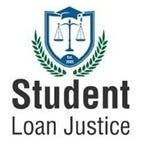The Government makes a Profit on Defaulted Student Loans.
A defining hallmark of a predatory lending system.
In 2010, we found that the federal government was making a profit, not a loss, on defaulted student loans. This is a claim that no other lender for any other type of loan (including governmental loans) can make. More recent White House Budget data shows that this is still true today, and that the profitability of student loan defaults is certainly far greater today than in 2010. Making a profit on defaulted loans is a defining characteristic of a predatory lending system. Citizens everywhere should be very concerned.
The 2010 White House Budget reported a recovery rate on defaulted FFELP (federally guaranteed) loans of 122%. All other loans the government made or insured that year had an average recovery rate of about 34%, and no other type of loan exceeded a 100% recovery rate, or even came close. At the time, the large majority of all federal student loans were of this category, where the government does not make, but rather guarantees.
More recent White House Budget Data (2022), shows that this trend has continued for the Direct Loan Program (where the government makes and holds the loans, rather than just guarantee them), with an average recovery rate of over 100%. Similar to the 2010 data, student loans were the only type of loan that could be found in the federal portfolio for which the recovery rate exceeded 100%
Importantly: Unlike the older, FFELP (federally guaranteed) loans, Direct Loan recoveries are inherently far more profitable than FFELP loans because so much interest is built into Direct Loans.
For defaulted FFELP loans, the government, makes no interest on the loan prior to default, and pays a claim amounting to the entire balance of the loan at the time of default, which includes both unpaid principal and interest. For Direct Loans, however, the government paid a much smaller principal when the loan was originally made, whereas the value of the loan at the time of default typically includes a large amount of interest- which accrues to the government rather than a private lender. The recovery rate for both, however is calculated by comparing the amount recovered to the balance of the loan at the time of default.
So while the recovery rate for Direct loans are lower than that for defaulted FFELP loans, the profitability of these recoveries is inherently far, far greater.
There is no other lending system in existence in this country where the lender can claim to be making a profit on defaults.
Make no mistake: a loan portfolio which accrues nearly $100 billion in annual interest, where defaults are actually profitable, and where very few loans are being cancelled (as is the case with the federal student loan program), it is literally impossible to lose money on the loans. In fact, the program can only be making money from the program…and a lot of it. And all of this profit for loans that President Lyndon Johnson said would be made “free of interest” when he signed the Higher Education Act into law in 1965.
What is most disturbing: The default rate for people leaving school in 2004 is estimated to be 40%, and this is likely a low figure since the estimates were based on voluntary surveys, which defaulted borrowers are inherently unlikely to fill out. The class of ’04, however, was only borrowing about a third of what students are borrowing today. Moreover, even before the pandemic, 85% of all federal student loan borrowers were underwater (ie not paying, or paying but with an increasing balance) on their loans, and nearly 60% weren’t making payments. With 3 years of nearly universal non-payment due to the pandemic, this non-payment rate will escalate dramatically when repayment is again demanded from the borrowers. It is not at all unreasonable to expect that 70% or more of borrowers will wind up in default on their federal loans when the lending system is turned back on. This is many multiples of the sub-prime home mortgage default rate of 20%, by way of comparison. So, by all rational metrics, the lending system is in catastrophic failure.
It is not at all unreasonable to expect that 70% or more of borrowers will wind up in default on their federal loans when the lending system is turned back on. So, by all rational metrics, the lending system is in catastrophic failure.
The unprecedented, and unwarranted removal of both bankruptcy rights, and statutes of limitations lie at the core of the student loan problem. In the absence of these protections, the lending side (up to and including the Department of Education) can- and does use this power to abuse the borrowers, extract vast sums of wealth from them, and ruin their lives (see the examples below). The real, human cost of this predatory lending system has been massive. The harm that is poised to be exacted on the citizenry is incalculable.
A small sample of the people who have been harmed by these loans:
This cannot and will not continue. At a minimum, constitutional bankruptcy rights must be returned to these loans. The catastrophic proportions of this failure, however, are such that it probably would be best to simply cancel the loans, end the lending system, and replace it with a more rational, rationally priced, and fair higher education funding plan.
If you agree, please sign this petition.
